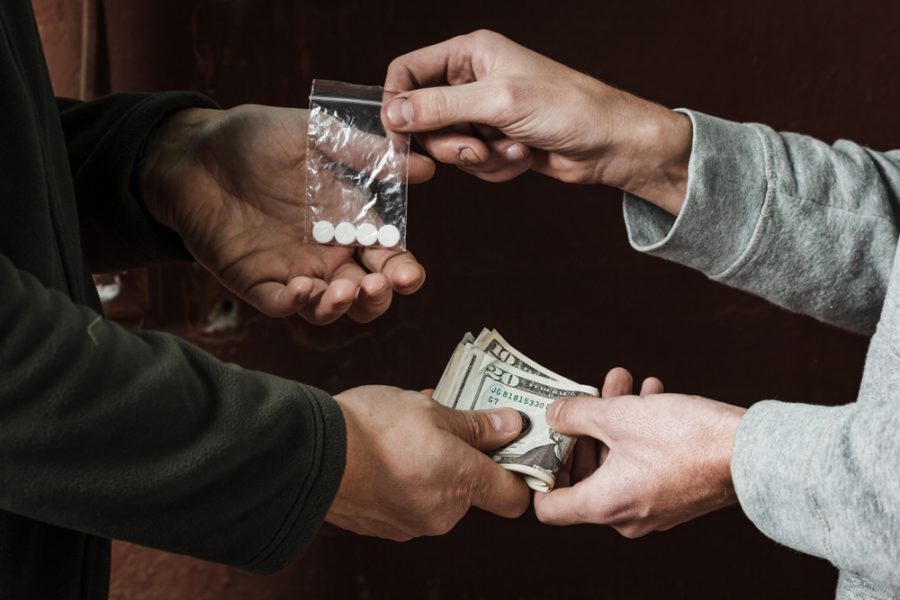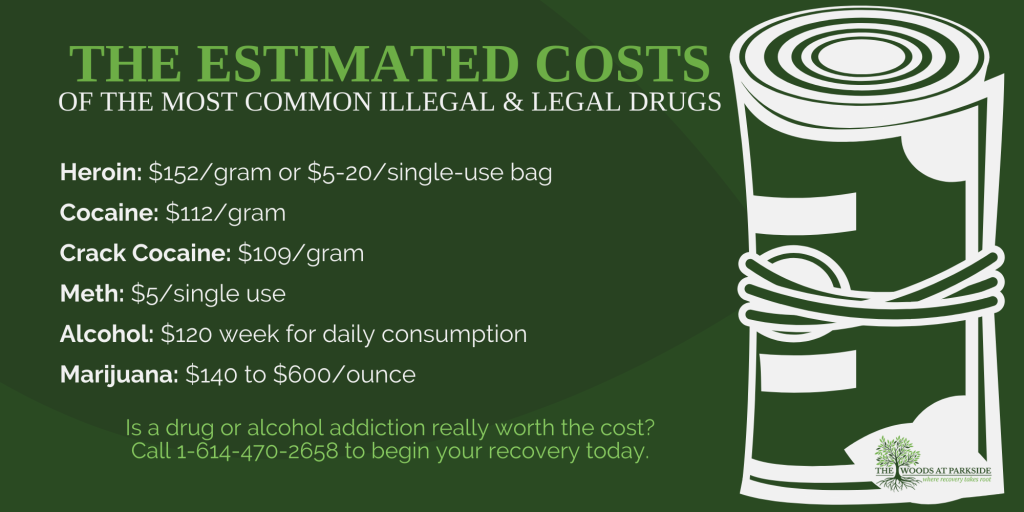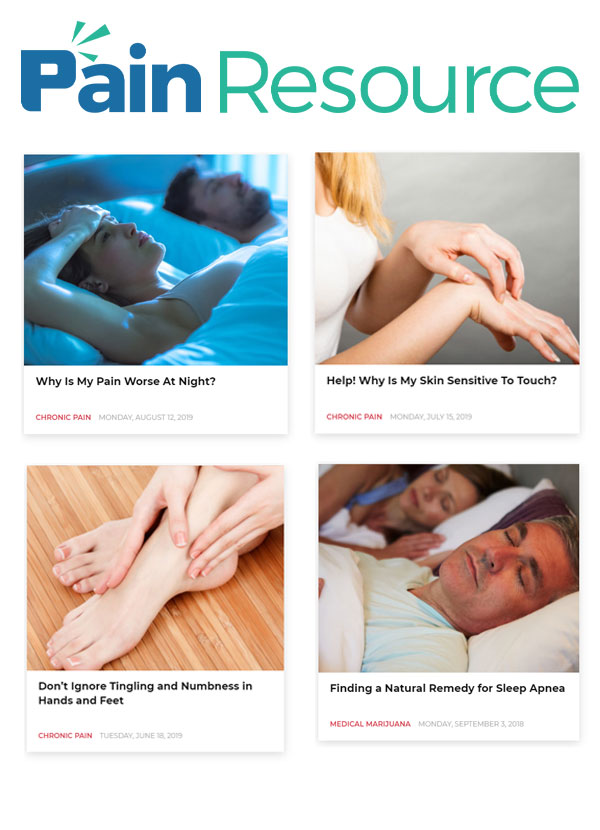
“Addiction treatment is too expensive.” If you added up the cost of maintaining a drug addiction, what does it cost you? What is the street price of common addictive drugs, and how much does an overdose or drug-related emergency cost?
Now ask yourself if drug addiction treatment is worth the cost. How much money and years of your life could you earn back by beating addiction?
Are you curious about the cost of addiction and treatment? Contact The Woods at Parkside to learn about rehab costs.
Reluctance to go to rehab is widespread. Even in circumstances where you have acknowledged your addiction and know you need to seek treatment to forge a healthy path free from drugs or alcohol, the idea of drug or alcohol rehab remains unpleasant. No matter how detrimental the impacts of addiction are to one’s physical, emotional, and social health, rehab still remains a decision of last resort.
This is evidenced by addiction-related statistics and addiction treatment data. It is estimated that more than twenty-one million Americans over the age of twelve struggle with a substance use disorder; however, less than ten percent will ever seek or receive treatment. This means ninety percent of people continue to use and avoid treatment for various reasons, not all of which are directly related to personal choice. The idea that addiction treatment costs are too high leads many to forgo seeking the help they need to get well.
Table of Contents
What is the Cost of Rehab?

The overall cost of addiction treatment varies depending on the treatment program and the level of care you need to get well. Some programs, such as state and federally funded programs, are free of charge (if you meet particular eligibility requirements), and insurance may cover some or all of others. Still, some programs may cost several hundred dollars per day. No matter your budget or insurance options, there is a place you can go to get the help you need to safely and successfully overcome addiction.
Costs Related to Types of Care
The type of care offered at a treatment program affects the overall cost of rehab. Some addictions also require different or multiple treatment types to help you achieve your sobriety goals. Several other factors affect the overall cost of each treatment program, ranging from private rooms and luxury amenities to medical care and medication support. Each level of care has different costs associated with it.
Detox
The exact cost of detoxification services depends on if the program is an inpatient or outpatient detox program. Outpatient detox services can range from $1,000 to $1,500 total. Inpatient programs may be billed as part of an inpatient rehab program or billed separately based on the program and the type of substance addiction being treated.
Inpatient (residential) rehab
Some inpatient rehab programs may cost between $6,000 and $10,000 for a 30-day program. For programs ranging from 60 to -90-days, you can expect the cost to range from $12,000 to $60,000 or more, depending on the benefits and services offered by the treatment center.
Outpatient rehab
Because outpatient rehabs do not have a housing requirement, several costs associated with inpatient rehab (meals, housing, 24/7 staffing, etc.) are not a part of the cost of outpatient care. As a result, outpatient programs are generally less costly than inpatient rehab. The overall cost depends on various factors, including how many treatment sessions you attend each week and the duration of your treatment program. Typical outpatient rehab costs range from $5,000 to $10,000 for a 90-day program.
Measuring the Cost of Addiction
What many do not realize is that, in fact, the cost of maintaining an ongoing drug or alcohol addiction likely far outweighs the cost of going to rehab. The costs of addiction are more than merely the numbers related to the financial implications of substance abuse. Over time, ongoing addiction also has medical, emotional, social, and personal costs.
Drug and alcohol users are more likely to skip work, switch jobs, or miss work due to illness than someone without a substance use disorder. This can have a negative impact on your income and family stability. The cost of legal problems, health issues, obtaining drugs, and lost employment all add up in time.
According to the National Institute on Drug Abuse, drug abuse in the United States (including illegal drugs, opioids, and tobacco) costs more than $740 billion annually. The 2020 census put the average population of the United States at just under 332 million people, with approximately 253 million people over age eighteen. This means each American adult is paying (in one form or another) just under $3,000 annually in social, medical, or legal costs related to drug use even if they have never touched a drop of alcohol, smoked a cigarette, or experimented with drugs. These numbers do not include the personal costs someone struggling with addiction pays to fund a drug or alcohol habit.
Addiction Costs and Specific Drugs

There is not a location online where one can go to find today’s cost for a particular illicit or prescription drug. However, The United Nations Office on Drugs and Crime (UNODC) and the World Drug Report offer insight into the cost of some illicit drugs as part of annual monitoring surveys.
- Heroin – $152 per gram or between $5 and $20 per single-use bag. Someone with a severe heroin use disorder may use up to 15 bags per day for a total of up to $91,250 per year.
- Cocaine – in the United States, cocaine costs approximately $112 per gram. Though usage rates differ based on tolerance and addiction severity, constant users will use up to 5 grams each day for a total of $560 per day or $204,400 annually.
- Crack cocaine – The average cost of crack cocaine is $109 per gram
- Meth – A single dose of methamphetamine can cost around $5. The average person could spend up to $38,000 per year, depending on the severity of their addiction.
- Alcohol – If you drink 7 days a week and consume between 5 and 6 beers a day, you will spend around $120 per week on beer alone—that averages out to just under $6,000 each year.
- Marijuana- the per gram cost of marijuana (without a medical marijuana card) can range from $140 to $600 per ounce, depending on the quality of the drug.
Considering the above, yes, rehab can be costly. However, in the long-term, the out-of-pocket cost associated with drug and alcohol use outpaces the cost of rehab. The numbers above do not account for lives lost or the social and economic implications of untreated substance use disorders. As mentioned previously, estimates show that the estimated cost of drug abuse in the United States currently exceeds $740 billion annually and continues to grow.
To put such a staggering number into context, that is the equivalent of 435 duplicates of the Space Shuttle Endeavour orbiter, 1200 Air Force One jets, or approximately five times the net worth of Amazon founder Steve Bezos. Substance abuse in the United States adversely affects society due to increased healthcare costs, crime, loss of life, and lost productivity.
Yes, rehab can be costly, but ongoing drug and alcohol use costs far more than most treatment programs. If you would like to learn more about the true cost of continuing addiction and how rehab can help. Contact The Woods at Parkside to learn about rehab costs.
The post The Cost of Addiction: The Financial Impact of Long-Term Drug Use appeared first on The Woods At Parkside.
Source
Original Author: Beacon User

